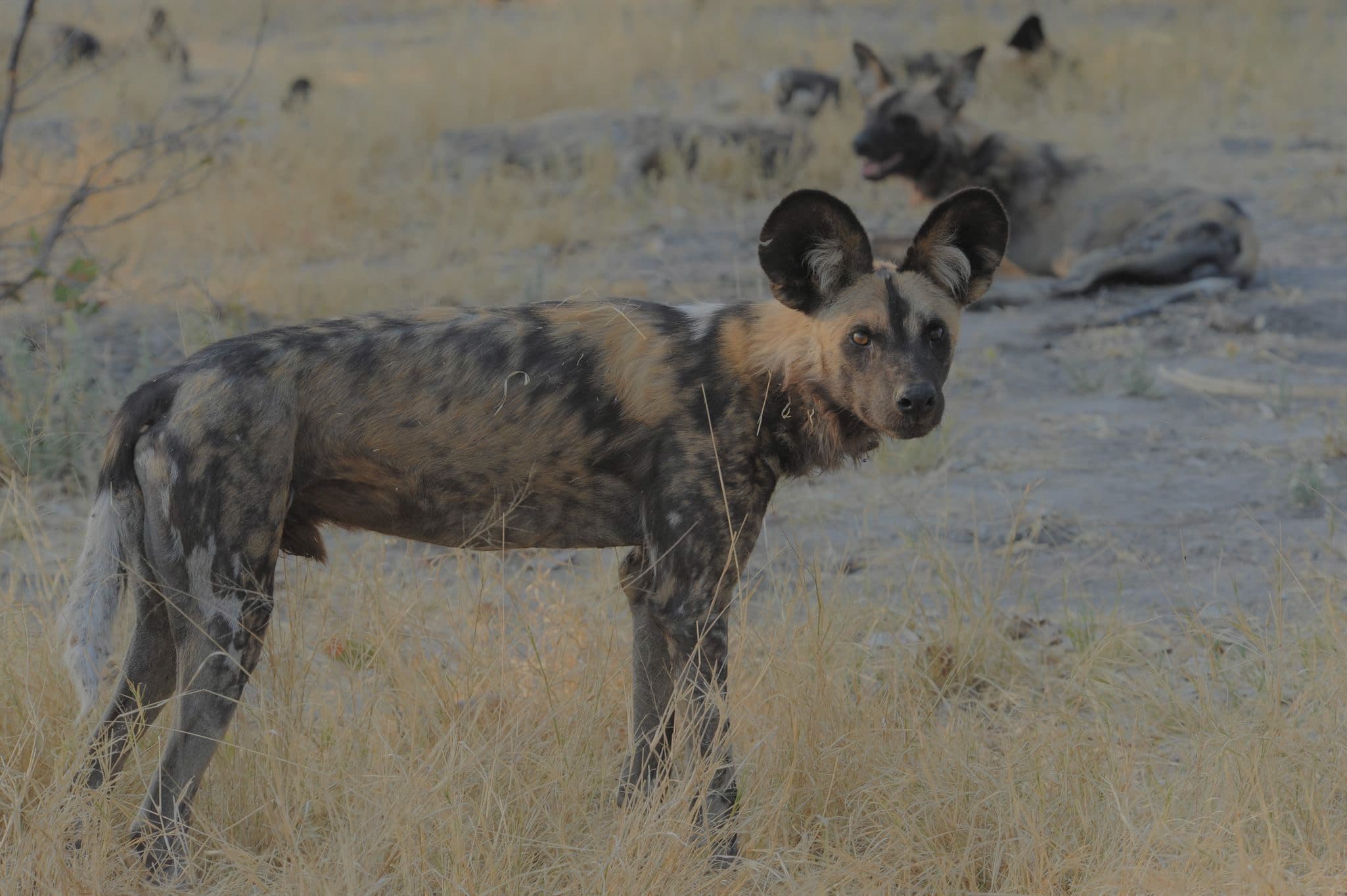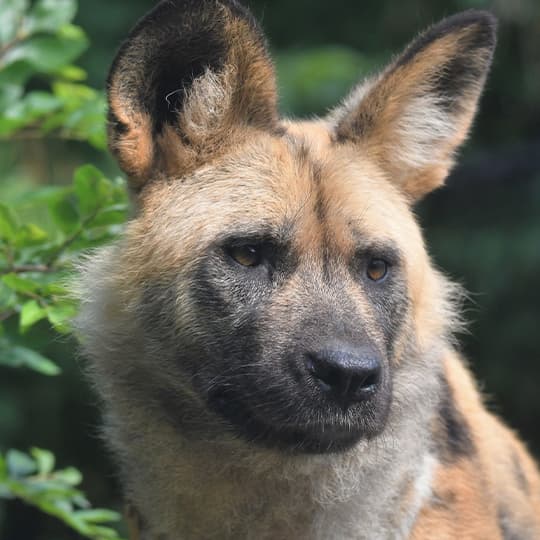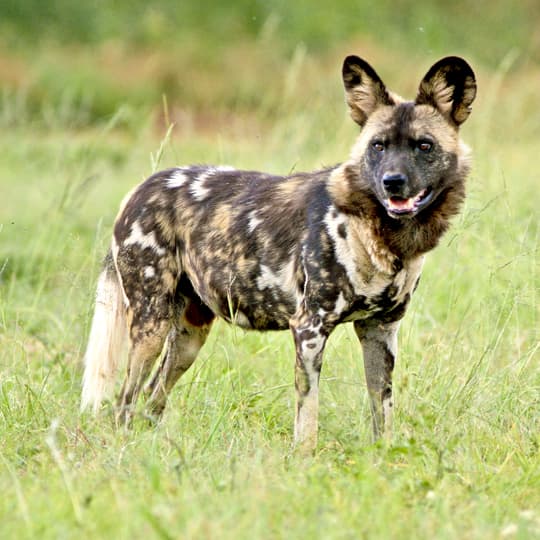
The Botswana Center for African Painted Dogs

Background
African painted dogs are in grave danger. Surveys show that they have lost at least 90 percent of their historic range and now, only three large viable populations remain in all of Africa. The single, largest core population exists in northern Botswana, and this is where we are focusing our efforts to save this iconic predator.
Conflict with humans, particularly with livestock farmers living in rural areas adjacent to wildlife areas, is easily the most common driver of large predator population decline. As a result of growing human populations, there is an increasing urgency to identify and mitigate the conflict that occurs when people come into contact with predators –especially painted dog packs. And, whereas this human/predator conflict is the root cause of decline in painted dog populations, domestic dogs owned by humans can transmit lethal canine-specific diseases like rabies and canine distemper to painted dogs.

St. Louis Interest
The Saint Louis Zoo has participated in the Association of Zoos and Aquariums' Species Survival Program (SSP) for painted dogs by housing a group since 2015. With this group, scientists at our Zoo have conducted behavior observation studies, an extensive echocardiogram study and a hormone assessment to further knowledge about this species to assist conservation efforts.

Goal
Through the work of our partner, the Botswana Predator Conservation Trust, we endeavor to minimize or eliminate the human/painted dog conflict by learning more about scent marking behavior in this species, as well as developing laboratory-synthesized compounds that mimic natural scents that will keep painted dogs away from areas where conflict with humans will be most likely.
Conservation Science
Painted dogs have unique social structure – caring for their young, the aged and the injured – that sets them apart from every other predator in Africa. They also have a very complex and understudied scent marking behavior. In fact, one of the characteristics that sets painted dogs apart from other predators is that they are respectful of one another's territory. Territories are scent marked when a pack approaches another pack's territorial markers, yet they do not cross each other's bio-boundary.
Preliminary experiments that used carefully collected, previously scent-marked vegetation and placed this near human settlements proved successful in keeping painted dogs away. Dogs did not cross this bio-boundary.
Our collaborators are currently using remote camera traps to collect images and video of painted dogs at both naturally existing boundaries and human-created boundaries that will allow behavioral scientists to study the complex interactions of various packs of painted dogs throughout the seasons.
The next step will be to develop synthesized scents in laboratories and test these in real-life situations for both deterrence and longevity of effectiveness. If successful, this project could go a long way toward ensuring the future of this apex carnivore.

